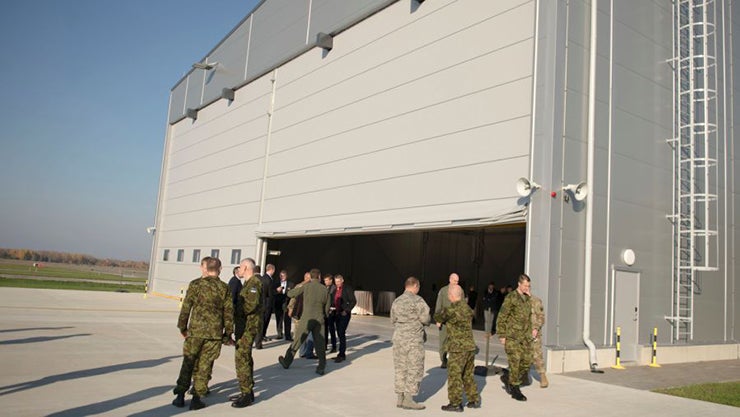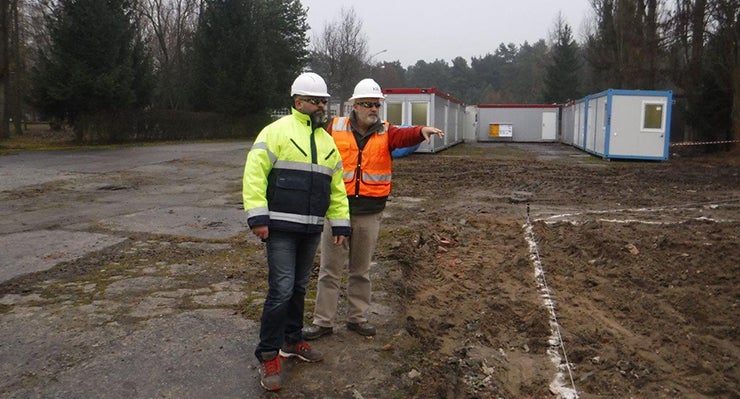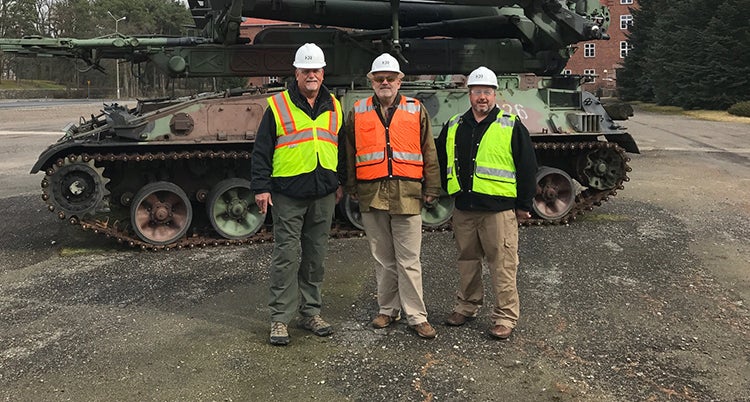Supporting USACE: Baltic States Rebuild to Accommodate NATO Presence
Russia’s annexation of the Crimean Peninsula in 2014 sparked concern from the former Soviet nation-states that flank its eastern border. These countries possess small air forces and depend heavily on NATO, European Union and American allies for protection.
To deter Russian aggression, enhance regional defense and improve the readiness of the United States forces in Europe, the federal government launched the European Reassurance Initiative — now known as the European Deterrence Initiative. Stemming from our award-winning work completed for the Air Force Civil Engineer Center in Afghanistan in 2016, our team was selected to perform construction management services at several air bases and logistics facilities in the former-Soviet states.

Our in-country staff began each project by attending pre-construction meetings to start working with the team. Team visited job sites and met with local subcontractors and United States Army Corps of Engineers to facilitate project start. Back in the U.S. they maintained communications with subcontractors and USACE, providing quality control and interface as needed.
The on-site construction inspector teamed with an in-country firm to provide site inspections that included punch lists, pre-finals and finals. Our team worked with the contractor’s quality control manager and project manager to verify AFCEC and USACE received a quality end project. They resolved issues prior to starting punch lists and explained why specifications were enforced or used to local subcontractors – as local code requirements were often not the same as required by AFCEC or USACE.

The team provided daily construction reports, which were instrumental to the client to detail activities, base access issues, material deliveries, daily man-power, progress and issues that needed guidance. The client relied on these reports as they lacked a contracting officer representative in country and used these reports to review the contractor’s documents and submittals.
By performing quality assurance reviews and attending weekly construction progress meetings, the team reviewed contract drawings, requests for information, submittals, earnings reports and progress payments. Throughout the projects, our team provided daily and weekly schedule updates to the client.

When required, our in-country staff could “reach back” to the U.S.-based team for engineering support. Our staff verified that the contractor and their sub-contractors followed the three phases of construction, their safety plan, quality control plan, and testing requirements for electrical, HVAC, and plumbing.
The projects not only boost the capabilities of the U.S. and NATO to maintain an operational front throughout Eastern Europe, but create the ability to use and test the latest aircraft in new environments. Much of the Baltic States remain at or below freezing from November through March, testing equipment resiliency. The team updated electrical and structural support to keep U.S. forces operating at maximum capacity. The infrastructure enhancements are not always glamorous, but they make a difference in the quality of life to the servicepersons temporarily deployed there. The goal was not to establish a United States Air Force base, but to take the existing bases and enhance them to meet U.S.-NATO standards.

Challenges Working Internationally
Throughout many of our projects worldwide, communication has proved to be a challenge. Our team learned a key lesson in Afghanistan — hiring a local subcontractor and local national team enhanced the speed and quality of work. They were able to navigate the local bureaucracy and connect the team with local engineer and procurement manager to keep projects on schedule and budget.
By hiring and training local inspectors, the team can achieve expert results while minimizing the amount of U.S.-based employees operating oversees. Harkening back to his days in the USAF, Chewy called the use of local nationals, a “force multiplier” — a factor that dramatically increases the effectiveness of a group.
“The projects were incredibly rewarding. Local communities felt strongly that we were there to help, and we felt very welcome. These countries have not seen a lot of Americans, so they were very interested in us. They’ve seen all the western movies and know all the western culture, but it was very interesting to comparing their small countries to how vast and diverse the United States can be.” – Chewy Johnston, HDR Project Manager
Even though working abroad proved challenging for our teams — being away from family and friends while experiencing different cultures — they found new friends in each country. Each community we worked in and the locals on each project enjoyed that our staff made significant efforts to speak the local language and communicate with them as much as possible.
“A big plus was eating the local dishes in local restaurants, attending city events and parades. Basically, supporting the community.” - Chris Zigovsky, senior construction supervisor, who spent nine months in Poland.



